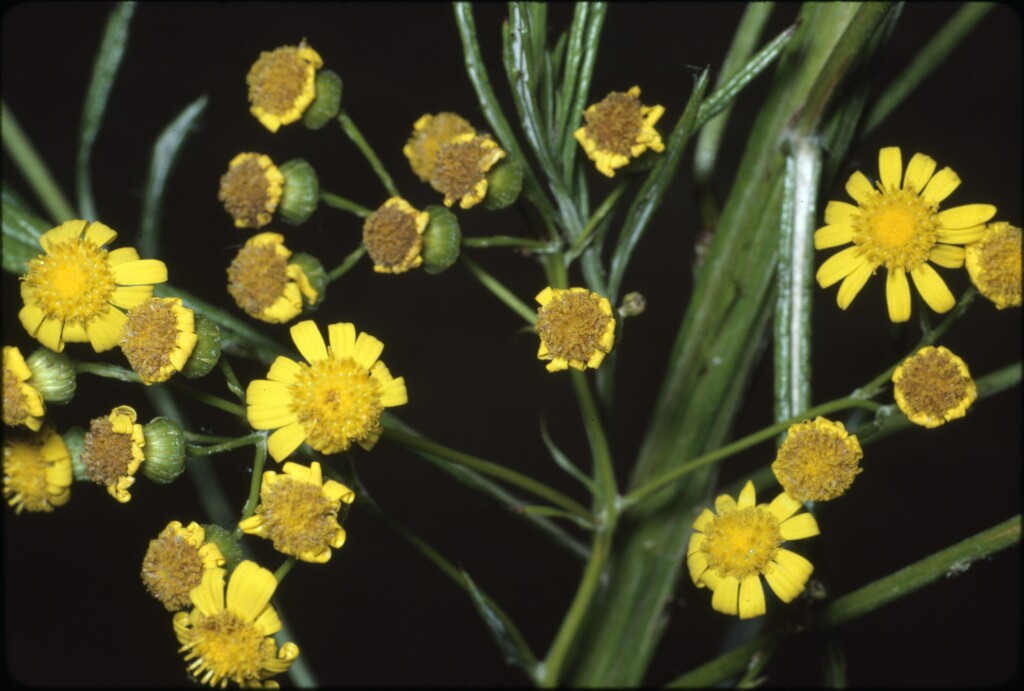Senecio pterophorus
DC. African DaisyErect perennial to c. 1.5 m high; stems longitudinally ridged or winged, initially usually white-cobwebbed, finally glabrous. Leaves sessile or pseudopetiolate, lanceolate to oblanceolate, 5–15.5 cm long, 3–20 mm wide (or up to 55 mm wide in young plants), at least the lower ones usually with 2–8 forward-directed teeth per side, the upper ones (rarely all) entire; margins often recurved; hardly auriculate but usually shortly winged at base; upper surface scabrous, finally glabrous and often shining; lower surface densely white- or grey-cobwebbed. Inflorescence corymbose, (5–)10–20(–30) cm across; capitula 40–200 or more, radiate; involucre broadly campanulate, 4.5–6 mm long, 3.5–4.5 mm diam., sparsely cobwebbed at base; bracts 18–22; bracteoles to 14–20. Ray florets 8–13, yellow, ligules 4–7 mm long; disc florets c. 40–90, yellow. Cypselas obloid, 1.5–1.8 mm long, brown or reddish-brown, minutely appressed-papillose in rows; pappus of slender white hairs 4–5 mm long, deciduous. Flowers Dec.–Mar.
LoM, MuM, Wim, GleP, VVP, GipP, OtP, Gold, CVU, GGr, DunT, EGL, HSF. Also naturalised SA. Native to South Africa. An aggressive weed, appearing following disturbance, particularly fire, and noted in Douglas, Cavendish, Greenwald, Mt Napier, Portland, Maryborough, Crib Point, French Island and Melbourne area. Initially collected in Victoria in 1908 but not becoming invasive until c. 1972.
Walsh, N.G. (1999). Senecio. In: Walsh, N.G.; Entwisle, T.J., Flora of Victoria Vol. 4, Cornaceae to Asteraceae, pp. 941–965. Inkata Press, Melbourne.
 Spinning
Spinning


